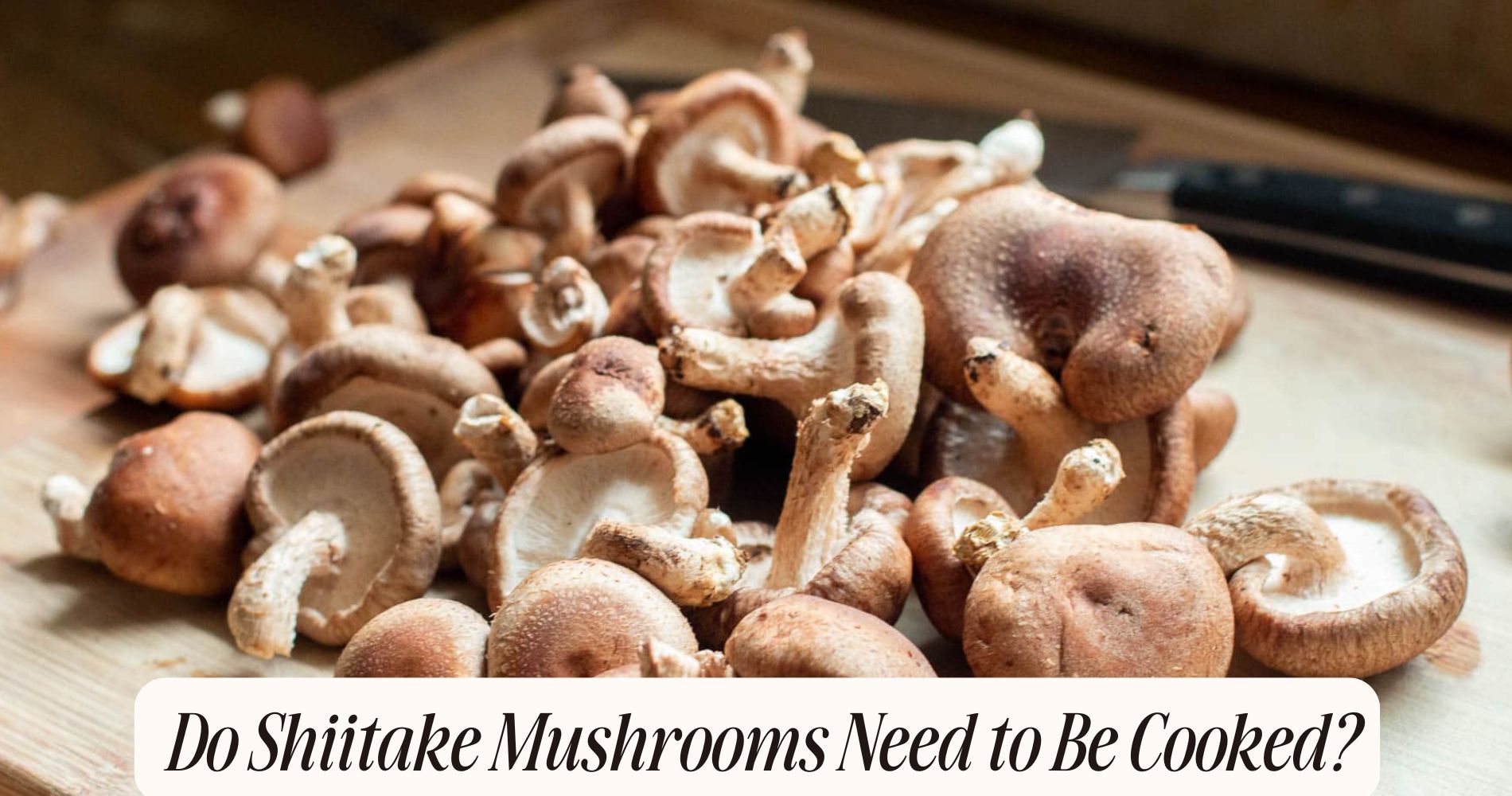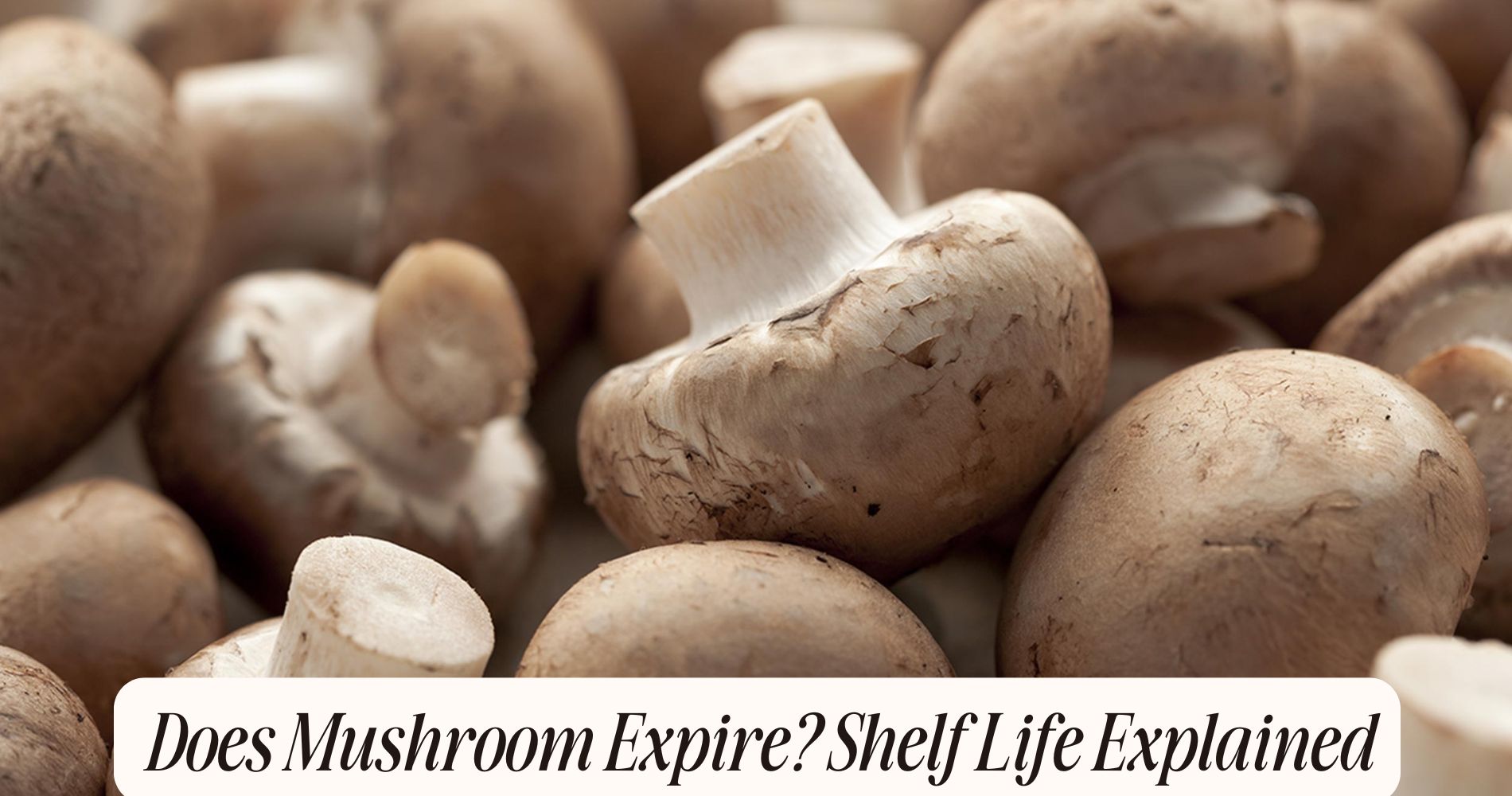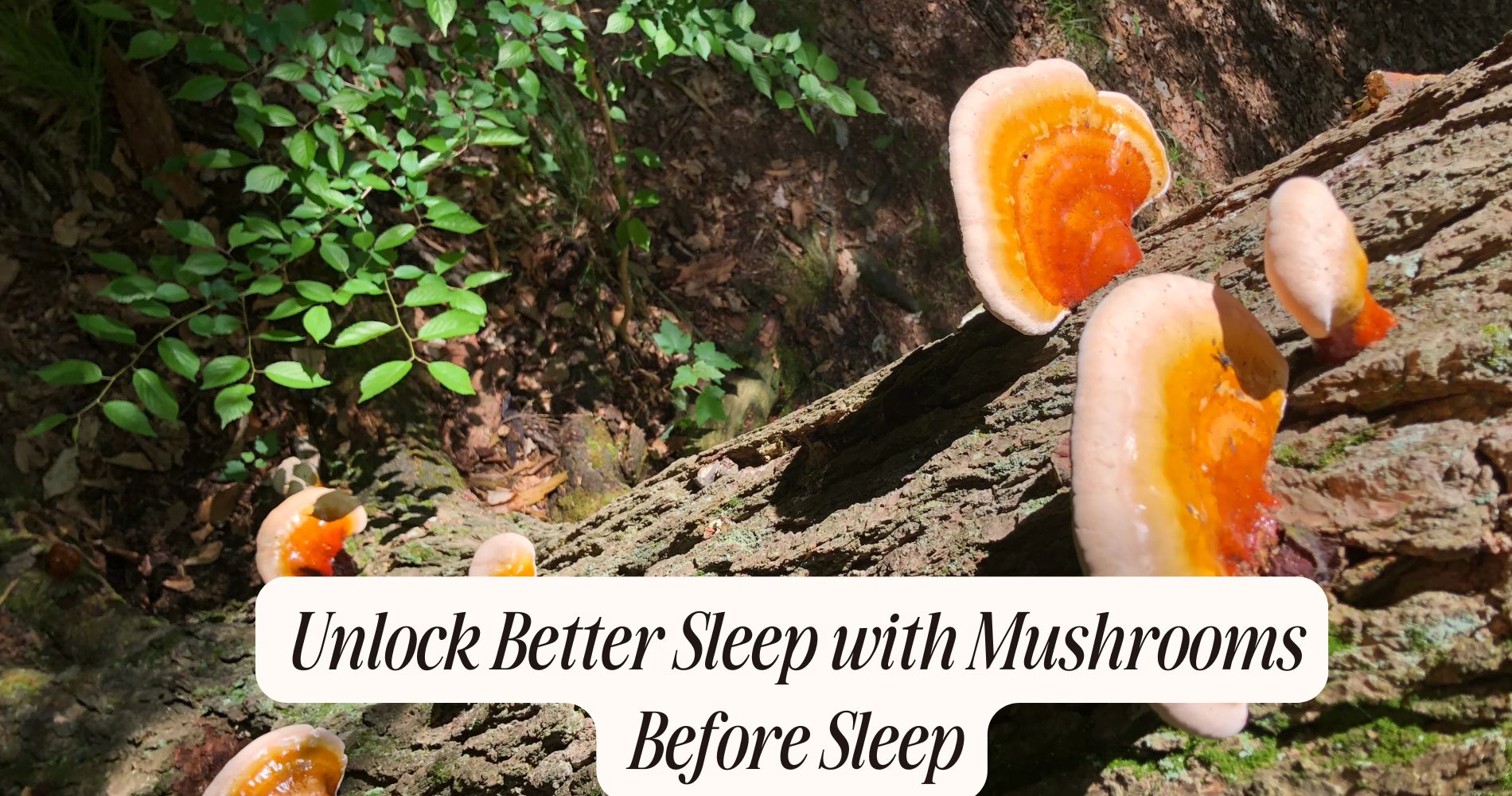
Do Shiitake Mushrooms Need to Be Cooked?
Do shiitake mushrooms need to be cooked? Yes, you need to cook shiitake mushrooms to guarantee they're safe and tasty. Raw shiitakes can cause allergic reactions and gastrointestinal issues for some people. Cooking helps break down tough cell walls, changing their texture from firm to tender. It also enhances their umami flavor and aroma, making them a delicious addition to meals. You can use various cooking techniques like sautéing, grilling, or steaming to enjoy them in dishes like stir-fries and soups. If you're curious about cooking methods and flavor pairings, there's more to discover about getting the best out of shiitake mushrooms!
Nutritional Profile of Shiitake Mushrooms
When it comes to the nutritional profile of shiitake mushrooms, you'll find they pack a punch. These fungi are low in calories but high in essential nutrients, making them a fantastic addition to your diet. Shiitake mushrooms offer a unique combination of vitamins, minerals, and antioxidants that can support your overall health.
In terms of nutritional comparisons, shiitake mushrooms shine brightly against other common vegetables. For instance, they contain significant amounts of B vitamins, particularly B2 (riboflavin) and B5 (pantothenic acid), which help with energy metabolism.

You'll also benefit from their high levels of copper, which plays a crucial role in red blood cell production and iron absorption.
One of the standout shiitake benefits is their potential to boost the immune system. They contain polysaccharides, like lentinans, that may enhance your body's ability to fend off infections.
Additionally, the presence of ergothioneine, a powerful antioxidant, helps combat oxidative stress.
Safety of Raw Shiitake Consumption
When considering raw shiitake mushrooms, it's important to be aware of potential allergic reactions some people may experience.
While they offer nutritional benefits, cooking them enhances their safety and digestibility.
Let's explore why cooking shiitake mushrooms is often recommended.
Potential Allergic Reactions
Raw shiitake mushrooms can pose a risk for some individuals due to potential allergic reactions. While many people enjoy these mushrooms without issue, you should be aware of the possibility of developing allergic symptoms. These reactions can vary in severity and may include skin rashes, itching, and gastrointestinal discomfort.
When you consume raw shiitake mushrooms, your immune response might mistakenly identify certain proteins in the fungi as harmful. This misidentification triggers your body to release histamines, leading to the aforementioned allergic symptoms. If you have a history of mushroom allergies or other food allergies, it's prudent to approach raw shiitake consumption with caution.
Even if you've eaten cooked shiitake mushrooms without any issues, raw varieties might still provoke an allergic reaction. If you experience any discomfort after eating raw shiitake mushrooms, it's crucial to seek medical advice. In some cases, allergies can escalate, resulting in more severe reactions, including anaphylaxis.
To guarantee your safety, consider cooking shiitake mushrooms thoroughly, as this process can help reduce the risk of allergic reactions while still allowing you to enjoy their unique flavor.
Nutritional Benefits Cooked
Cooking shiitake mushrooms not only enhances their flavor but also considerably boosts their nutritional benefits. When you cook these mushrooms using various cooking techniques like sautéing, steaming, or grilling, you help break down their tough cell walls. This process makes it easier for your body to absorb the essential nutrients packed inside.

Raw shiitake mushrooms contain certain compounds that can inhibit nutrient absorption. For instance, cooking helps to reduce the presence of potentially harmful substances like lentinans and other polysaccharides, which may cause digestive discomfort. By cooking them, you not only mitigate these risks but also elevate their antioxidant levels, which can support your immune system.
Additionally, cooking shiitake mushrooms increases their vitamin D content when exposed to UV light during the process. This means you're getting more out of each bite.
Health Risks of Eating Raw
Eating shiitake mushrooms without cooking them can pose several health risks. One major concern with raw consumption is the presence of a compound called lentinans. While lentinans have potential health benefits, they can also cause digestive issues for some people when consumed raw, leading to stomach discomfort or even nausea.
Additionally, raw shiitake mushrooms may carry bacteria or pathogens that cooking typically eliminates. These microorganisms can lead to foodborne illnesses, putting your health at risk. Some people might also experience allergic reactions to raw shiitake, manifesting as skin rashes or other symptoms.
Another health implication of eating shiitake mushrooms raw is the potential for developing a condition called "shiitake dermatitis." This rare skin reaction can occur in sensitive individuals, causing an itchy rash.
To enjoy the nutritional benefits of shiitake mushrooms safely, it's best to cook them thoroughly. Cooking not only enhances flavor but also minimizes these health risks, allowing you to savor the delicious taste and reap the health benefits without worry.
Always prioritize your health by ensuring your shiitake mushrooms are cooked before consumption.
Cooking Methods for Shiitake Mushrooms
To enjoy shiitake mushrooms safely and fully, you'll want to explore various cooking methods that bring out their rich flavor and texture. One popular approach is using sautéing techniques.
Start by slicing the mushrooms and heating a pan with a bit of oil. Once the oil's hot, toss in your mushrooms, stirring frequently. This method enhances their umami flavor and gives them a delightful, tender texture. You can also add garlic or onions while sautéing for extra depth.

Another great option is grilling. For grilling methods, you'll want to use whole or large pieces of shiitake mushrooms. Brush them lightly with olive oil and season with salt and pepper.
Preheat your grill and place the mushrooms directly on the grates. Grill for about 5-7 minutes on each side, until they're nicely charred. This method imparts a smoky flavor that complements the natural earthiness of the mushrooms.
Both sautéing and grilling are excellent ways to prepare shiitake mushrooms, allowing you to enjoy their unique characteristics while ensuring they're safe to eat.
Flavor Enhancement Through Cooking
Cooking shiitake mushrooms doesn't just make them safe to eat; it also intensifies their umami flavor, giving your dishes a savory boost.
You'll notice a delightful change in texture, making them more tender and enjoyable.
Plus, the aroma released during cooking can elevate your meal to a whole new level.
Enhanced Umami Profile
When you cook shiitake mushrooms, their natural umami flavor intensifies, creating a richer taste experience. This enhancement occurs due to the breakdown of umami compounds found within the mushrooms. By applying various cooking techniques—like sautéing, roasting, or simmering—you can reveal these compounds, making them more pronounced.
For example, sautéing shiitake mushrooms in a bit of oil not only brings out their deep, earthy flavor but also encourages the release of glutamate, a key umami compound. Roasting them can caramelize the natural sugars, further enhancing their savory profile. Simmering in broth allows the mushrooms to impart their umami goodness into the liquid, creating a flavorful base for soups or sauces.
You'll find that the transformation in flavor is remarkable. Raw shiitake mushrooms have a mild taste, but once cooked, they present a depth that complements a wide range of dishes.
Texture Improvement Technique
There's something remarkable about the texture of cooked shiitake mushrooms that sets them apart. When you cook shiitake mushrooms, their firm, meaty texture transforms into a tender delight that enhances your dishes.
You'll find that using various texture improvement methods can greatly elevate your culinary creations. One effective shiitake cooking technique is sautéing. By quickly frying the mushrooms in a hot pan with a bit of oil, you achieve a nice sear that locks in moisture while giving them a slight crispness.
Another great method is braising, where you slowly cook the mushrooms in a flavorful liquid. This technique allows them to absorb the surrounding flavors, resulting in a rich, velvety texture that's hard to resist.
Steaming is another option that preserves moisture without losing the natural chewiness of shiitake mushrooms. Whichever method you choose, remember that cooking not only improves the texture but also enhances the overall flavor profile.
Aroma Release Benefits
The aroma of shiitake mushrooms intensifies dramatically with cooking, adding another layer of complexity to your dishes. When you apply various cooking techniques, like sautéing, roasting, or grilling, you reveal a treasure trove of aroma compounds that enhance their natural flavor.
These compounds are responsible for that rich, earthy scent you love, and they become more pronounced as the mushrooms heat up.
By cooking shiitake mushrooms, you not only improve their texture but also elevate their aroma profile. Techniques such as caramelizing or browning can bring out even deeper, savory notes.
For instance, when you sauté them until golden brown, the Maillard reaction occurs, creating a mouthwatering aroma that can make any dish irresistible.
Texture Changes When Cooked
Cooking shiitake mushrooms considerably alters their texture, making them more enjoyable to eat. When you cook them, the cooking impact transforms their firm, slightly chewy raw state into a tender, succulent delight. This texture variation enhances the overall eating experience, allowing the mushrooms to absorb flavors from other ingredients in your dish.

Raw shiitake mushrooms can be a bit rubbery and tough, which may not appeal to everyone. However, as you sauté, steam, or roast them, the heat breaks down the cell walls, resulting in a softer and more palatable texture. This change not only makes them easier to chew but also allows them to blend seamlessly with other components in your meal.
Furthermore, cooking can intensify the umami flavors in shiitake mushrooms, complementing their altered texture. The crispy edges developed during frying or roasting add an exciting crunch, creating a delightful contrast to the tender interior.
Common Dishes Featuring Shiitake
Many delicious dishes showcase shiitake mushrooms, making them a favorite in various cuisines. One popular option is shiitake stir fry, where you can toss these mushrooms with colorful veggies and your choice of protein. The rich umami flavor of shiitakes enhances the overall taste, making every bite satisfying. You can whip up this dish quickly, perfect for a weeknight meal.
Another fantastic dish is mushroom risotto. The creamy texture of the risotto pairs beautifully with the earthy flavor of shiitake mushrooms. As you slowly stir in the broth, the shiitakes release their essence, creating a dish that feels gourmet yet is simple to prepare. You can elevate your risotto further by adding Parmesan cheese and fresh herbs for added depth.
Don't forget about soups and stews, where shiitake mushrooms can really shine. Their robust flavor adds richness to broths, and they can be the star ingredient in a hearty miso soup or a savory ramen.
With so many options, you'll never run out of ways to incorporate shiitake mushrooms into your meals.
Recommendations for Enjoying Shiitake
To truly savor shiitake mushrooms, you don't just want to cook them; you should also consider how to enhance their natural flavors. Start by sautéing them in a bit of olive oil or butter. This simple technique brings out their umami richness.
For the best shiitake pairings, think about complementary ingredients. Shiitakes work wonderfully with garlic, soy sauce, and ginger, so don't hesitate to toss them into stir-fries or noodle dishes.
When it comes to serving suggestions, consider adding shiitakes to your salads for a hearty touch or using them as a topping for pizzas. If you're feeling adventurous, try blending them into a creamy soup or risotto. Their earthy flavor adds depth and complexity to any dish.
Don't forget about seasoning! A sprinkle of fresh herbs like thyme or parsley can elevate your shiitake creations.
And if you're experimenting with different cuisines, shiitakes can be a great addition to Asian-inspired dishes, adding a unique twist. With these tips, you'll enjoy shiitake mushrooms in ways that truly highlight their deliciousness.
Frequently Asked Questions
Can Shiitake Mushrooms Be Eaten Raw in Salads?
You can eat raw shiitake mushrooms in salads, but consider raw shiitake benefits and safety. They offer unique flavors and nutrients, yet guarantee they're fresh to avoid potential adverse effects. Enjoy them wisely!
How Do Shiitake Mushrooms Compare to Other Mushrooms When Raw?
When you compare shiitake mushrooms to others raw, you'll find they have a unique flavor profile and higher nutritional value. Their earthy taste stands out, making them a delicious addition to salads or fresh dishes.
What Is the Best Way to Store Raw Shiitake Mushrooms?
To store raw shiitake mushrooms, use paper bags for breathability. Keep them in the fridge, and avoid plastic. For freshness, check regularly for moisture, and consume within a week for the best flavor and texture.
Are There Any Benefits to Eating Raw Shiitake Mushrooms?
Eating raw shiitake mushrooms can offer some nutritional benefits, like vitamins and antioxidants. However, be cautious of potential toxins that might cause digestive issues. Cooking them eliminates these risks while enhancing their flavor and nutrition.
Can You Freeze Cooked Shiitake Mushrooms for Later Use?
Yes, you can freeze cooked shiitake mushrooms for later use. Just use proper freezing methods to maintain flavor and texture, though keep in mind that freezing may slightly impact their nutritional value. Enjoy them later!
Conclusion
To summarize, while you can technically eat raw shiitake mushrooms, it's best to cook them for safety and flavor. Cooking not only enhances their rich taste but also improves their texture, making them a delightful addition to various dishes. So, whether you're sautéing, grilling, or adding them to soups, enjoy shiitake mushrooms cooked to maximize their nutritional benefits and culinary potential. Embrace the versatility of this delicious fungus in your meals!




